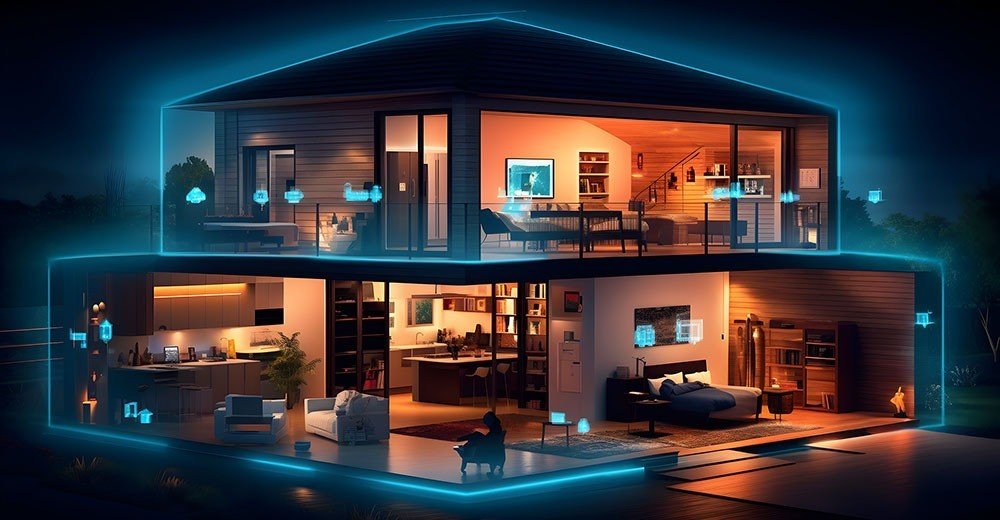The Future of Smart Homes: Integrating Technology in Architecture
The evolution of smart home technology is revolutionizing the way we live, making our homes more efficient, comfortable, and secure. As technology continues to advance, integrating it seamlessly into architectural design is becoming increasingly important. Here’s a look at how the future of smart homes is shaping up and the key technologies transforming modern architecture.
Smart Home Integration: The Basics
Home Automation Systems
Home automation systems serve as the backbone of a smart home, allowing homeowners to control various devices and systems through a centralized platform. These systems can manage lighting, heating, cooling, security, and entertainment, providing convenience and energy efficiency.
Voice-Activated Assistants
Voice-activated assistants like Amazon’s Alexa, Google Assistant, and Apple’s Siri enable hands-free control of smart devices. Integrating these assistants into home design ensures seamless interaction with various smart technologies.

Key Technologies Shaping Smart Homes
Internet of Things (IoT)
The Internet of Things (IoT) connects everyday devices to the internet, allowing them to communicate and share data. In smart homes, IoT enables devices like thermostats, lights, and appliances to be controlled remotely and work together intelligently.
Artificial Intelligence (AI)
Artificial Intelligence (AI) enhances smart home systems by learning from user behavior and preferences. AI can optimize energy usage, improve security, and create personalized experiences, making homes smarter and more responsive.
Smart Lighting
Smart lighting systems offer customizable lighting solutions that can be controlled remotely or set to adjust automatically based on occupancy or time of day. These systems enhance energy efficiency and create a comfortable living environment.
Architectural Integration of Smart Technology
Building Automation
Incorporating smart technology during the architectural design phase allows for seamless integration of building automation systems. This includes advanced HVAC systems, automated window treatments, and integrated security systems that can be controlled via a single interface.
Sustainable Design
Smart home technology plays a significant role in sustainable design. Energy-efficient appliances, smart thermostats, and automated lighting systems help reduce energy consumption and lower utility bills. Integrating renewable energy sources like solar panels with smart home systems further enhances sustainability.
Adaptive Spaces
The future of smart homes includes adaptive spaces that can change configuration based on the homeowner’s needs. Movable walls, adjustable lighting, and multifunctional furniture can be controlled through smart systems to create flexible living environments.
Enhancing Security and Safety
Smart Security Systems
Smart security systems offer advanced features such as remote monitoring, motion detection, and real-time alerts. Integrating these systems into architectural design ensures comprehensive protection for homeowners.
Health and Wellness
Smart homes can also promote health and wellness through features like air quality monitors, circadian lighting, and connected fitness equipment. These technologies create a healthier living environment and improve the overall well-being of residents.
Future Trends in Smart Home Technology
5G Connectivity
The rollout of 5G networks promises faster and more reliable connectivity for smart home devices. This will enable more efficient communication between devices and enhance the performance of home automation systems.
Augmented Reality (AR) and Virtual Reality (VR)
AR and VR technologies are poised to transform how homeowners interact with their living spaces. From virtual home tours to augmented reality design tools, these technologies will offer new ways to visualize and customize home environments.
Blockchain for Smart Homes
Blockchain technology could enhance security and transparency in smart home systems. It can be used for secure data sharing, smart contracts, and managing the interoperability of various smart devices.
Conclusion
The future of smart homes lies in the seamless integration of technology and architecture. By incorporating advanced technologies like IoT, AI, and smart automation into the design and construction of homes, we can create living spaces that are more efficient, comfortable, and secure. Embracing these innovations will not only enhance the quality of life for homeowners but also pave the way for more sustainable and intelligent living environments. As technology continues to evolve, the possibilities for smart homes are limitless, promising a future where our homes are as smart as they are stylish.



